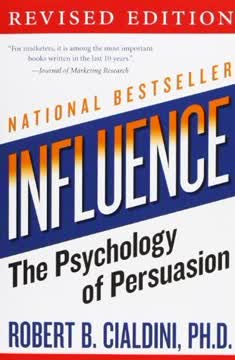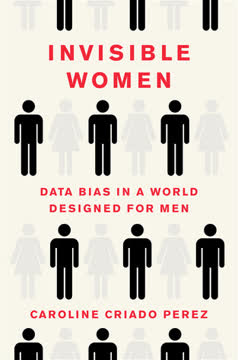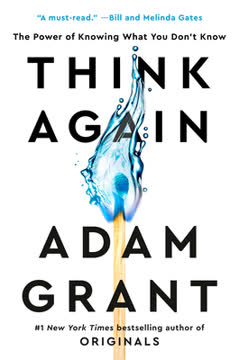가지 주요 요점
1. AI + 성장 마케팅 = 스마트 마케팅: 고객 유치의 미래
조만간 고객 유치 노력은 인공지능, 머신러닝, 자동화에 의존하게 되어, 이전 세대의 비즈니스 인텔리전스와 대시보드로는 불가능했던 방식으로 크로스 채널 사용자 여정을 조정하고 맞춤화하며 개인화하여 최적의 결과를 제공하게 될 것이다.
마케팅의 새로운 시대. 인공지능과 머신러닝은 스타트업이 방대한 양의 데이터를 처리하고 반복적인 작업을 자동화하며 대규모로 데이터 기반 결정을 내릴 수 있도록 하여 성장 마케팅에 혁신을 가져오고 있다. 이러한 변화는 성장 팀이 전략과 창의성에 집중할 수 있게 하고, 기계가 캠페인 최적화의 무거운 짐을 맡게 한다.
고객 유치 3.0. 이 새로운 패러다임은 인공지능을 활용하여:
- 복잡한 크로스 채널 캠페인을 조율하고
- 예산을 동적으로 배분하며
- 실시간으로 창의적 자산을 최적화하고
- 실행 가능한 인사이트를 도출하며
- 성과 개선을 위한 자율적 행동을 취한다.
AI 기반 마케팅 자동화를 수용함으로써 스타트업은 성장을 가속화하고 고객 유치 비용을 줄이며 광고 지출 수익률을 개선할 수 있다.
2. 지능형 기계 프레임워크: 사용자 유치 자동화
마케팅 자동화에서 인공지능의 가장 실질적인 이점은 성장 팀이 매달 수천 개(수백 개가 아님)의 다양한 실험을 병행하여 수행할 수 있도록 돕는 것이다.
프레임워크 구성 요소. 지능형 기계 프레임워크는 다음으로 구성된다:
- 고객 여정 이해
- 창의적 자산 및 콘텐츠
- 세분화 및 타겟팅을 위한 데이터
- 마케팅 채널에 대한 API 접근
- 최적화를 위한 피드백 루프
- 성과 개선을 위한 머신러닝 알고리즘
신속한 실험. AI는 성장 팀이 인간이 할 수 있는 것보다 기하급수적으로 더 많은 실험을 수행할 수 있게 한다. 이러한 가속화된 학습 과정은:
- 효과적인 전략의 빠른 식별
- 더 효율적인 예산 배분
- 모든 마케팅 채널에서의 지속적인 최적화
- 대규모 개인화된 사용자 경험을 이끌어낸다.
이 프레임워크를 활용함으로써 스타트업은 테스트, 학습, 확장의 선순환을 만들어 수작업 노력을 초월하고 우수한 결과를 이끌어낼 수 있다.
3. 중요한 지표: 핵심 성과 지표에 집중하기
AI의 성공을 측정하는 것은 비즈니스 KPI 목표를 지원하는 것과 완전히 일치할 때 훨씬 더 쉬워진다.
중요 KPI. 성공적인 성장 팀은 다음과 같은 핵심 지표에 집중한다:
- 고객 유치 비용(CAC)
- 유지율
- 고객 생애 가치(LTV)
- 광고 지출 수익률(ROAS)
- 전환율
데이터 기반 의사 결정. AI 노력을 이러한 KPI와 일치시킴으로써 스타트업은:
- 마케팅 노력의 영향을 객관적으로 측정하고
- 장기적인 비즈니스 성공을 위한 캠페인을 최적화하며
- 이해관계자와 투자자에게 명확한 ROI를 입증하고
- 지속적으로 성장 전략을 다듬을 수 있다.
허상 지표를 피하고 비즈니스 성장 및 수익성과 직접적으로 연관된 지표에 집중하는 것이 중요하다. AI 시스템은 이러한 특정 KPI를 최적화하도록 훈련되어야 하며, 모든 마케팅 노력이 의미 있는 비즈니스 결과에 기여하도록 해야 한다.
4. 창의적 성과: AI 기반 광고 최적화의 힘
창의성은 캠페인 성과에 영향을 미치는 가장 큰 레버이다.
AI 기반 창의적 최적화. 창의적 성과를 위해 AI를 활용하는 것은 다음을 포함한다:
- 여러 변수를 통한 A/B 테스트
- 사용자 데이터를 기반으로 한 동적 창의적 적응
- 광고 배치 및 형식의 실시간 최적화
- 다양한 청중 세그먼트를 위한 창의적 요소의 개인화
인간-AI 협업. AI가 데이터 분석 및 최적화에서 뛰어난 성과를 내지만, 인간의 창의성은 다음과 같은 부분에서 여전히 중요하다:
- 매력적인 광고 개념 개발
- 브랜드 내러티브 구성
- 목표 청중과의 감정적 공명 보장
- AI 인사이트를 해석하여 창의적 전략에 반영
인간의 창의성과 AI 기반 최적화를 결합함으로써 스타트업은 실시간 성과 데이터를 기반으로 지속적으로 개선되는 매우 효과적인 광고 캠페인을 만들 수 있다.
5. 구축 대 구매: AI 솔루션 전략 결정하기
스타트업의 목표는 현재와 미래의 비용을 최소화하는 것이다. 따라서 결정적인 요소는 성장 팀이 수익을 창출하기 위해 활용할 수 있는 가치를 제공하는 것이다.
주요 고려 사항:
- 핵심 역량: AI 개발이 스타트업의 전문 분야인가?
- 자원 배분: 주요 제품에서 자원을 전환할 여유가 있는가?
- 시장 출시 시간: AI 솔루션이 얼마나 빨리 필요한가?
- 맞춤화 필요: 기성 솔루션이 특정 요구 사항을 충족하는가?
- 장기 유지 관리: 지속적인 AI 개발 및 업데이트를 지원할 수 있는가?
전략적 접근. 대부분의 스타트업에게 AI SaaS 제공업체와의 파트너십은 다음의 최적의 균형을 제공한다:
- 신속한 구현
- 비용 효율성
- 최첨단 기술 접근
- 비즈니스 성장에 따른 확장성
그러나 독특한 요구 사항이나 AI 중심의 비즈니스 모델을 가진 일부 스타트업은 독자적인 솔루션을 구축하는 것이 유리할 수 있다. 핵심은 AI 전략을 전체 비즈니스 목표 및 자원 제약과 일치시키는 것이다.
6. AI 구현에서의 복잡성과 위험 관리
도전 과제는 가입/등록/결제 흐름 및 온보딩 중에 사용자 데이터 요청의 적절한 균형을 찾는 것이다.
주요 도전 과제:
- 데이터 수집 및 품질
- 개인 정보 보호 문제 및 규제 준수
- 기존 시스템과의 통합
- 팀 적응 및 기술 개발
- AI 결정의 투명성 및 설명 가능성
위험 완화 전략:
- 가치를 입증하기 위해 소규모, 명확히 정의된 프로젝트로 시작하기
- 데이터 인프라 및 거버넌스에 투자하기
- 명확한 개인 정보 보호 정책 및 사용자 동의 메커니즘 개발하기
- 팀원에 대한 지속적인 교육 및 지원 제공하기
- AI 성과 및 준수를 보장하기 위한 모니터링 시스템 구현하기
이러한 도전 과제를 사전에 해결함으로써 스타트업은 위험을 최소화하고 성장 전략에서 AI 구현의 이점을 극대화할 수 있다.
7. 미래의 성장 팀: 인간과 AI의 협력
선택은 인간 대 기계가 아니라, 인공지능과 인간 지능이 서로의 강점과 약점을 보완하여 잘 협력할 수 있는 방법이다.
진화하는 역할. 미래의 성장 팀은 슬림하고 고도로 숙련된 팀으로, 다음에 집중할 것이다:
- 전략적 계획 및 창의적 방향
- AI 인사이트 해석 및 고위 결정 내리기
- 교차 기능 관계 관리
- AI 시스템 성과 및 윤리적 고려 감독
AI의 책임:
- 데이터 분석 및 패턴 인식
- 캠페인 최적화 및 예산 배분
- 실시간 성과 모니터링 및 조정
- 채널 전반에 걸친 개인화된 콘텐츠 제공
인간과 AI 간의 이러한 공생 관계는 성장 팀이 고객 유치 및 유지에서 전례 없는 효율성과 효과성을 달성할 수 있도록 할 것이다.
8. 데이터는 생명선: 고객 데이터 플랫폼의 중요성
AI의 생명선으로서 CDP를 구축하는 것은 비즈니스를 앞으로 나아가게 하고 AI의 슈퍼파워를 완전히 활용하는 데 필요한 비즈니스 인사이트를 얻는 데 필수적이다.
CDP의 이점:
- 모든 접점에서 통합된 고객 프로필
- 실시간 데이터 수집 및 분석
- 향상된 세분화 및 개인화 기능
- 개선된 데이터 개인 정보 보호 및 준수 관리
CDP 구현:
- 모든 출처(온라인 및 오프라인)에서 데이터 중앙화
- 지속적이고 통합된 사용자 프로필 생성
- 실시간 분석 및 세분화 구현
- 시스템 및 채널 간 데이터 공유 가능하게 하기
강력한 CDP는 효과적인 AI 기반 마케팅의 기초를 형성하여 스타트업이 고객 데이터를 활용하여 보다 목표 지향적이고 효율적인 성장 전략을 수립할 수 있도록 한다.
9. AI 채택에서의 지속적인 도전 극복하기
도전 과제는 테스트하는 다양한 채널이 AI 지능형 기계에 쉽게 통합될 수 있도록 하는 것이다.
지속적인 도전 과제:
- 빠르게 진화하는 AI 기술에 보조를 맞추기
- 변화하는 개인 정보 보호 규정 및 사용자 기대에 적응하기
- 정교한 광고 사기와 싸우기
- 새로운 마케팅 채널 및 기술 통합하기
- 팀 전환 및 잠재적 감원 관리하기
성공 전략:
- 지속적인 교육 및 기술 개발에 투자하기
- 규제 변화에 대한 정보를 유지하고 사전 대응하기
- 강력한 사기 탐지 및 예방 조치 구현하기
- 새로운 채널을 수용할 수 있는 유연하고 모듈화된 AI 아키텍처 유지하기
- 팀 내 혁신 및 적응 문화를 조성하기
이러한 도전 과제를 예상하고 해결함으로써 스타트업은 AI 기반 성장 마케팅의 변화하는 환경에서 경쟁 우위를 유지할 수 있다.
10. AI와 함께 승리하기: 스타트업 성공을 위한 총체적 접근
함께 승리하는 사고방식은 스타트업 문화에 내재되어야 하며, AI가 적이 아닌 친구로 인식되도록 해야 한다.
주요 성공 요소:
- 경영진의 리더십 및 전사적 동의
- AI 이니셔티브와 비즈니스 목표의 명확한 정렬
- 교차 기능 협업 및 지식 공유
- 지속적인 학습 및 적응
- 윤리적 고려 및 책임 있는 AI 사용
승리하는 AI 전략 구현:
- 잘 정의된 고임팩트 사용 사례로 시작하기
- 데이터 인프라 및 품질에 투자하기
- 조직 전반에 AI 전문성 개발하기
- 실험 및 학습 문화를 조성하기
- AI의 영향을 지속적으로 측정하고 소통하기
AI 구현에 대한 총체적 접근을 채택함으로써 스타트업은 이 강력한 기술을 활용하여 성장을 촉진하고 효율성을 개선하며 각자의 시장에서 지속 가능한 경쟁 우위를 창출할 수 있다.
마지막 업데이트 날짜:
FAQ
1. What is Lean AI by Lomit Patel about?
- AI-driven growth marketing: Lean AI explores how startups can leverage artificial intelligence and machine learning to accelerate customer acquisition, retention, and revenue growth.
- Intelligent machine framework: The book introduces the concept of an “intelligent machine” that automates and optimizes marketing campaigns across multiple channels using data-driven insights.
- Comprehensive startup guide: It combines Lean Startup principles with AI-powered automation, offering practical frameworks for building, buying, and integrating AI solutions tailored to startup needs.
- Managing complexity and risk: The book also addresses how to handle the challenges of scaling, data management, and the evolving role of humans in AI-driven growth teams.
2. Why should I read Lean AI by Lomit Patel?
- Actionable AI strategies: The book provides a pragmatic roadmap for startups to implement AI and automation in marketing, bridging the gap between hype and real-world application.
- Real-world experience: Lomit Patel shares insights and case studies from his work at IMVU and other startups, illustrating successful AI-driven growth strategies.
- Future-proofing teams: It prepares readers for the future of marketing, where human creativity and AI automation work together, and highlights the skills and structures needed for success.
- Risk and challenge awareness: The book discusses potential pitfalls such as data privacy, algorithmic bias, and compliance, helping readers anticipate and navigate these issues.
3. What are the key takeaways from Lean AI by Lomit Patel?
- AI as a growth accelerator: Startups can dramatically scale user acquisition and retention by automating marketing tasks and optimizing campaigns with AI.
- Data is foundational: High-quality, unified first-party data is essential for effective AI-driven marketing and personalization.
- Experimentation at scale: AI enables running thousands of marketing experiments simultaneously, accelerating learning and campaign optimization.
- Human-AI collaboration: The most successful growth teams blend human creativity and strategic thinking with AI’s data processing and automation capabilities.
4. What are the best quotes from Lean AI by Lomit Patel and what do they mean?
- “Compete on the rate of learning.” This highlights the importance of rapid experimentation and adaptation in AI-driven marketing.
- “AI is only as good as the data you feed it.” Emphasizes the critical role of high-quality, well-governed data in achieving effective AI outcomes.
- “The future of growth is a hybrid team of humans and intelligent machines.” Stresses the need for collaboration between human marketers and AI systems for sustainable growth.
- “Don’t scale what doesn’t work.” Reminds startups to validate product/market fit before investing heavily in AI-powered acquisition.
5. How does Lean AI by Lomit Patel define and use the concept of an “intelligent machine” in marketing?
- Automated campaign management: The intelligent machine is an AI-powered system that autonomously manages budgets, bids, creatives, and audience targeting across channels.
- Continuous optimization: It uses machine learning algorithms to run and optimize thousands of experiments in real time, improving campaign performance and efficiency.
- Data-driven insights: The system processes vast amounts of structured and unstructured data to surface actionable insights and predict customer behavior.
- Reducing manual workload: By automating repetitive tasks, the intelligent machine frees marketers to focus on strategy and creative development.
6. What is the Growth Stack framework in Lean AI by Lomit Patel and how should startups use it?
- Three core layers: The Growth Stack consists of Acquisition, Engagement and Retention, and Monetization, all supported by Analytics and Insights.
- Strategic selection: Startups should choose a mix of activities from the stack that align with their stage and strengths, focusing on measurable impact.
- Third-party tools: Leveraging external platforms for stack elements is recommended to avoid resource drain and stay current with best practices.
- Analytics as foundation: The Analytics and Insights layer enables data-driven decisions through cohort analysis, event tracking, and sentiment analysis.
7. How does Lean AI by Lomit Patel define Customer Acquisition 3.0 and its significance?
- AI-powered acquisition: Customer Acquisition 3.0 uses AI and cloud-based data to manage paid user acquisition holistically, with real-time optimization across channels.
- Intelligent automation: AI systems dynamically allocate budgets, optimize creatives, and surface insights autonomously, reducing human dependency.
- Competing on learning speed: The approach emphasizes running many experiments simultaneously to extract insights faster and maximize ROI.
- Holistic campaign management: Moves beyond siloed data and manual processes, enabling startups to scale acquisition efficiently.
8. What are the most important metrics for startup growth according to Lean AI by Lomit Patel?
- Customer Acquisition Cost (CAC): Measures the cost to acquire a new customer; must be significantly lower than Customer Lifetime Value (LTV) for profitability.
- Retention Rate: Indicates customer loyalty and product value; cohort analysis is recommended to understand retention dynamics.
- Customer Lifetime Value (LTV): Estimates total revenue from a customer, guiding acquisition investment decisions.
- Return on Advertising Spend (ROAS) and Conversion Rate: Help optimize marketing budgets and evaluate campaign effectiveness.
9. What are the key user acquisition strategies recommended in Lean AI by Lomit Patel?
- Paid acquisition: Optimize paid channels like Google and Facebook, maintaining a healthy LTV:CAC ratio and using lookalike audiences for targeting.
- Virality: Encourage word-of-mouth growth through product love, viral loops, incentives, and influencer marketing.
- Content marketing: Create valuable content to attract organic traffic, improve SEO, and build community over time.
- Strategic partnerships and product innovation: Collaborate with aligned businesses and continuously improve the core product to expand reach and engagement.
10. How does Lean AI by Lomit Patel recommend deciding between building or buying AI solutions for marketing?
- Problem definition: Clearly articulate the marketing problem and assess if third-party solutions meet your needs or if custom development is required.
- Budget and timeline: Consider available resources and urgency; buying SaaS solutions is faster and less costly upfront, while building offers long-term customization.
- Risk assessment: Building involves technical debt and requires AI expertise; buying risks include data security and vendor reliability.
- Hybrid approach: Start by buying and later build niche components as needed for unique use cases.
11. What are the main risks and challenges of using AI in startup growth, according to Lean AI by Lomit Patel?
- Data dependency: AI’s effectiveness relies on high-quality, consistent first-party data; poor data leads to suboptimal results.
- Transparency and bias: Complex AI models can be “black boxes” and may perpetuate biases in training data, requiring monitoring and ethical alignment.
- Compliance and privacy: Regulations like GDPR impact data collection and usage, posing challenges for AI-driven personalization.
- Adaptability: AI models must handle changes in data patterns (“concept drift”) to maintain accuracy and relevance.
12. How does Lean AI by Lomit Patel describe the future collaboration between humans and AI in growth teams?
- Complementary strengths: AI excels at data processing and automation, while humans provide creativity, strategy, and empathy.
- Evolving roles: Growth team roles will shift toward managing AI tools, designing experiments, and interpreting insights, with routine tasks automated.
- Skill development: Future marketers need a blend of business, technical, and creative skills to guide AI-driven growth.
- Lean squads: The book recommends small, cross-functional teams focused on acquisition, retention, and monetization, working closely with AI systems.
리뷰
리안 AI는 1점에서 5점까지 다양한 평가를 받고 있다. 긍정적인 리뷰는 마케팅에서의 AI에 대한 간결하면서도 철저한 소개를 칭찬하며, 스타트업과 성장 단계의 기업에 유용한 통찰을 제공한다고 언급한다. 반면 비판적인 의견은 이 책이 내용이 부족하고 전문 용어와 불필요한 내용에 의존하고 있다고 주장한다. 일부 독자들은 AI의 구체적인 내용보다는 일반적인 마케팅 원칙에 더 초점을 맞추고 있다고 느낀다. 의견이 엇갈리긴 하지만, 많은 이들이 이 책이 디지털 마케팅 전략과 고객 유치 및 성장에 있어 AI의 활용을 이해하는 데 유용하다고 평가하고 있다.








